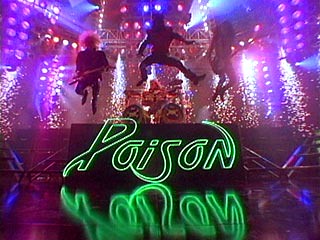“[M]oney itself is neither intrinsically benign nor evil.
Rather, it simply is a tool – which, if utilized responsibly, can enable people
to become and stay independent, achieve their financial (and/or philanthropic)
goals, and generally lead more productive and fulfilling lives.”
– Jack Polsky, Forward, “Raising Financially Fit Kids”

I have come to recognize that I believe, and live my life, based on certain fundamental truths. One of those truths is that each individual on this planet is unique, and, therefore, has something extraordinary to give to the world. Call it a “purpose,” if you will. Discovering who you are, finding your truth, is your key to success. Once you unlock that purpose, you must then have the courage and confidence to live it by contributing your best self to the world around you. This takes extraordinary faith, and at times great sacrifice. Another truth I take comfort in is one of science: for every action there is an equal and opposite reaction. If that is true, then by giving your greatest (action) you will be achieving your greatest result (reaction). This is where faith comes in, because often times you will not understand or recognize the results of your actions and efforts, or they may not be immediate.
In our society, money is the most common way we are rewarded for our contributions. If you invent or create something, you sell it and make money. If you provide a service, you are compensated for that service. It’s just how things work. As the old saying goes (and I am paraphrasing here): there is nothing wrong with having money; the problem is when money has you. Easier said than done, right? We are taught (or realize) from an early age that things cost money. Toys, food, movies, video games, electronics, etc. – everything we consume costs money. Hey, that’s just a reality. The problem, however, begins when our actions are dictated by our desire to buy something. That is, when our actions change from being motivated by contribution to being motivated purely by consumption.
– Jack Polsky, Forward, “Raising Financially Fit Kids”

I have come to recognize that I believe, and live my life, based on certain fundamental truths. One of those truths is that each individual on this planet is unique, and, therefore, has something extraordinary to give to the world. Call it a “purpose,” if you will. Discovering who you are, finding your truth, is your key to success. Once you unlock that purpose, you must then have the courage and confidence to live it by contributing your best self to the world around you. This takes extraordinary faith, and at times great sacrifice. Another truth I take comfort in is one of science: for every action there is an equal and opposite reaction. If that is true, then by giving your greatest (action) you will be achieving your greatest result (reaction). This is where faith comes in, because often times you will not understand or recognize the results of your actions and efforts, or they may not be immediate.
In our society, money is the most common way we are rewarded for our contributions. If you invent or create something, you sell it and make money. If you provide a service, you are compensated for that service. It’s just how things work. As the old saying goes (and I am paraphrasing here): there is nothing wrong with having money; the problem is when money has you. Easier said than done, right? We are taught (or realize) from an early age that things cost money. Toys, food, movies, video games, electronics, etc. – everything we consume costs money. Hey, that’s just a reality. The problem, however, begins when our actions are dictated by our desire to buy something. That is, when our actions change from being motivated by contribution to being motivated purely by consumption.
As a parent, I want my kids to be financially literate, and
learn how to be responsible with money. So, I am starting an allowance to teach
them basic lessons and money skills (my kids are 5 and 6 years old). Before I
reached the decision to do so, however, I struggled greatly with this very
issue: How do I raise my children to lead a life of contribution and not
consumption? How do I teach them that living their purpose is what is matters most,
not how much money they make?
Growing up, an allowance to me was something you received in
exchange for doing chores. Some parents would almost create a menu of chores
with assigned values to them. For example, taking out the garbage was $3, and
cleaning your room was $5 (or something to that effect). In thinking about
this, I realized that this type of system potentially creates negative money
habits in our children. Rather than being incentivized to pursue their passion,
they are incentivized to work for money. As a result, we develop the habit of
working solely for money, of asking, “how
do I make enough money to buy the things I need or want? This is very
different than developing the habit of asking ourselves, “how can I help or contribute value to a situation,” and then
working in order to contribute or add that value and be happy with whatever he
receives in return. When a child sees a toy he wants that costs $20, and
thinks, “if I clean my room for the next
month, then I can buy that toy,” the child’s focus is one of consumption.
However, if a child develops the habit of thinking, “how can I help or add value,” and is taught to live within the
means produced by his efforts, then the child will be focused on contribution. I
struggled with this for weeks. Although I may not have found all of the answers
just yet, here’s what I have decided so far:
I WILL NOT USE
AN ALLLOWANCE AS PAYMENT FOR CHORES. In Raising
Financially Fit Kids, Joline Godfrey teaches the following mantra: “An allowance is not an entitlement or a
salary. It is a tool for teaching children to manage money.” I will use
these exact words to explain to my children why they are getting an allowance,
and I will repeat it often as a reminder to both them and myself. Teaching my
children how to take care of themselves, and be a loving, contributing member
of our family, is entirely separate and will not be rewarded monetarily.
I WILL
CONSISTENTLY CELEBRATE AND REWARD THEIR EFFORTS BEFORE THEIR ACHIEVEMENTS.
Success is not a destination, it is an ongoing journey. Giving your greatest
self is an expression of your efforts, not the results you achieve (after all,
the outcome of your efforts is not always what you expect). If I am going to
teach my children this lesson, and help them develop the habit of giving their
best, then I am going to have to continually reinforce this truth. I will
celebrate their efforts, and how hard they tried, before I focus on the
outcome. The process is what they should enjoy first, the means, not the end
result. You can control your own actions and efforts, but you do not control
how the world receives or reacts to those actions and efforts.
I WILL TEACH
THEM TO BE GRATEFUL FOR EVERYTHING THEY RECEIVE. While your every action
may have a result, you are not entitled to any one particular result.
Therefore, everything that you receive is a gift, which you should be grateful
for. In addition, it is perfectly okay to (and in fact you should) enjoy
everything that you receive. Part of living life to its fullest is having fun
and appreciating the opportunities you are given.
I WILL NOT TEACH
THEM TO TREAT MATERIAL WEALTH DIFFERENTLY. Too often, I see parents alter
their children’s behavior based on how much money someone else has. For
example, they will want their children to be better behaved when visiting a
wealthy friend or relative who has a big house or expensive things. This sends
the wrong message to children, and makes them associate an importance with
money and material wealth. I will do my best to not celebrate or distinguish
these things, and to hopefully help my children develop the habit of being
comfortable in all settings, rich or poor. Children should be equally as polite
and well-mannered with everyone they meet or visit. To the extent someone is
revered, it should be for the quality of their character, not the quantity of
their possessions.
I WILL LIVE BY
EXAMPLE. This, perhaps, is the greatest teaching tool. My actions will
always speak louder than words.





